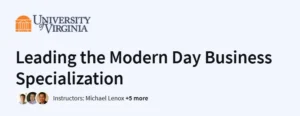What will you in Docker for the Introduction to Portfolio Construction and Analysis with Python Course
Gain an intuitive understanding of the theory behind modern portfolio construction techniques.
Write custom Python code to estimate risk and return parameters.
Utilize powerful Python optimization libraries to build scientifically and systematically diversified portfolios.
Build custom utilities in Python to test and compare portfolio strategies.
Program Overview
1. Analysing Returns
⏱ Duration: ~6 hours
Understand the fundamentals of returns and risk-adjusted performance measures.
Explore measures like Max Drawdown, Value at Risk (VaR), and Conditional VaR (CVaR).
Hands-on lab sessions to implement these concepts in Python.
2. An Introduction to Portfolio Optimization
⏱ Duration: ~4 hours
Learn the basics of portfolio optimization and the efficient frontier.
Implement optimization techniques using Python.
Understand the trade-off between risk and return in portfolio construction.
3. Beyond Diversification
⏱ Duration: ~6 hours
Delve into advanced topics like factor models and style analysis.
Explore the limitations of traditional diversification.
Implement advanced diversification techniques in Python.
4. Introduction to Asset-Liability Management
⏱ Duration: ~6 hours
Understand the principles of asset-liability management (ALM).
Explore strategies to manage financial risks associated with liabilities.
Implement ALM strategies using Python.
Get certificate
Job Outlook
Equips professionals with practical skills in portfolio construction and risk management.
Applicable to roles in investment management, financial analysis, and asset management.
Enhances proficiency in Python programming for financial applications.
Specification: Introduction to Portfolio Construction and Analysis with Python
|
FAQs
- Basic Python knowledge is helpful but not mandatory.
- The course includes guided exercises to learn financial coding step by step.
- You’ll practice using libraries like NumPy and Pandas in a financial context.
- Even beginners can follow along with structured coding labs.
- Advanced coders may complete assignments faster but all levels are supported.
- Builds confidence in quantitative portfolio management techniques.
- Enhances employability for investment management, trading, and risk analysis roles.
- Demonstrates practical Python applications on resumes and job interviews.
- Provides tools to test investment strategies realistically.
- Prepares you for analyst or junior portfolio management positions.
- Focuses on hands-on coding for portfolio analysis.
- Introduces optimization tools used by asset managers.
- Explains how to interpret risk-return trade-offs with real data.
- Goes into factor models and diversification strategies.
- Provides experience with Python, which is widely used in finance.
- The course is designed at a beginner-friendly level.
- Concepts are explained intuitively before diving into technical details.
- Coding exercises reinforce understanding, not just theory.
- Prior finance exposure helps but is not required.
- Suitable for career changers moving into finance/analytics.
- The course can be completed in about 20–25 hours total.
- Dividing into 5–6 hours per week makes it manageable.
- Extra practice time may be needed if you are new to coding.
- Replaying lectures and redoing labs improves retention.
- Flexible pacing allows learners to balance work and study.





